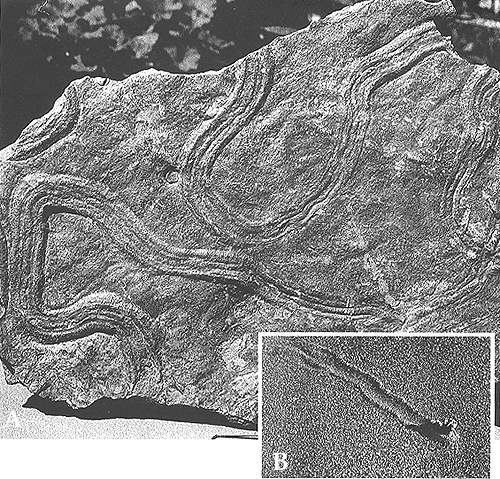
Crawling (feeding) traces
Plate 152

Crawling (feeding) traces
Plate 152
We now pass to biogenic structures characterizing sediments deposited in deeper water, i.e., below wave base. These sediments basically consist of mud slowly accumulating by normal fallout of particles from the surface, or mud and sand emplaced by catastrophic processes (storms, turbidity currents). The organisms living there obviously like quiet water and can tolerate mud in suspension; they also get their food by ingesting mud and absorbing organic substances contained in it, which qualifies them as mud-eaters or limivorous. Most mud-eaters are soft-bodied and do not fossilize. Their prevailing movements are horizontal, vertical displacement being limited by the availability of oxygen (its rate of consumption can exceed the rate of supply in sediments of low permeability). Consequently, reptating animals (like the Modern gastropod Bullia in picture B) leave mostly surface traces, i.e., trails.
A sporadic event of high energy can bring in sand, whose deposition buries the traces and preserves them as molds. We thus find the structure as a sole mark (cast) in turbidite and tempestite beds. The meandering trace of picture A is an example; it was found in the Cretaceous Pietraforte Formation, a "flysch" of northern Apennines. Smaller circular marks, scattered on the bed surface, represent sections of vertical burrows.
| Photo: G. Piacentini 1970. |